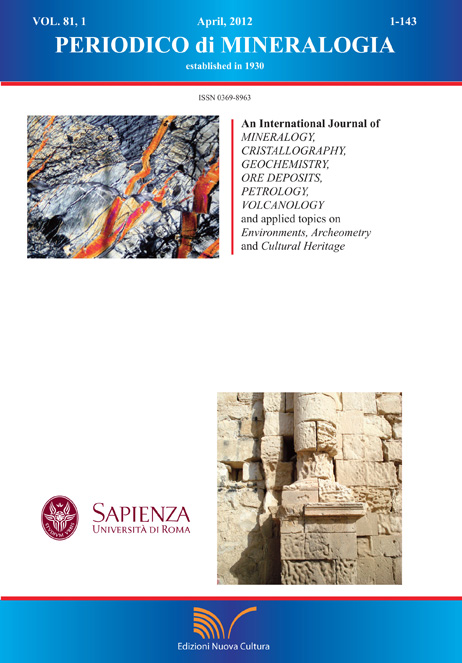Morphological, chemical and mineralogical characterization of deterioration products from the tomb of Kheruef (TT192), (Luxor, Egypt)
DOI:
https://doi.org/10.2451/2012PM0008Keywords:
Tomb of Kheruef, Luxor, Salts, SEM−EDS, XRD, Petrographic examination.Abstract
The present paper aims at characterizing some deterioration products formed on the decorated walls of the tomb of Kheruef (TT192), El-Assasif district, El-Qurna necropolis (Luxor), Upper Egypt. Mainly, the deterioration phenomenon affecting in the area is closely related to the crystallization of salts. The local supply of salt ions usually comes from the abundance of soluble salts in the bed-rock and ground layers. The morphology and the microanalysis of the contained mineral phases in the damaged layers were carried out using scanning electron microscopy (SEM) equipped with an energy dispersive X-ray detector (EDS). The mineralogical composition of the samples was determined using X-ray powder diffraction analysis (XRD), while the petrographic examination on the prepared thin-sections was carried out using the polarized light microscope (PLM). The results showed that the limestone is consisting of fine-grained calcite crystals embedded in a micritic matrix rich in quartz and fossils (e.g. foraminifera). Also, the results allowed the determination of the main deterioration mechanisms affecting in the tomb. Based on the results of these analyses, different salt minerals were identified such as halite (NaCl), gypsum (CaSO4·2H2O), and bassanite (CaSO4∙0.5H2O). The obtained results will be used in the conservation-restoration interventions of the tomb.


